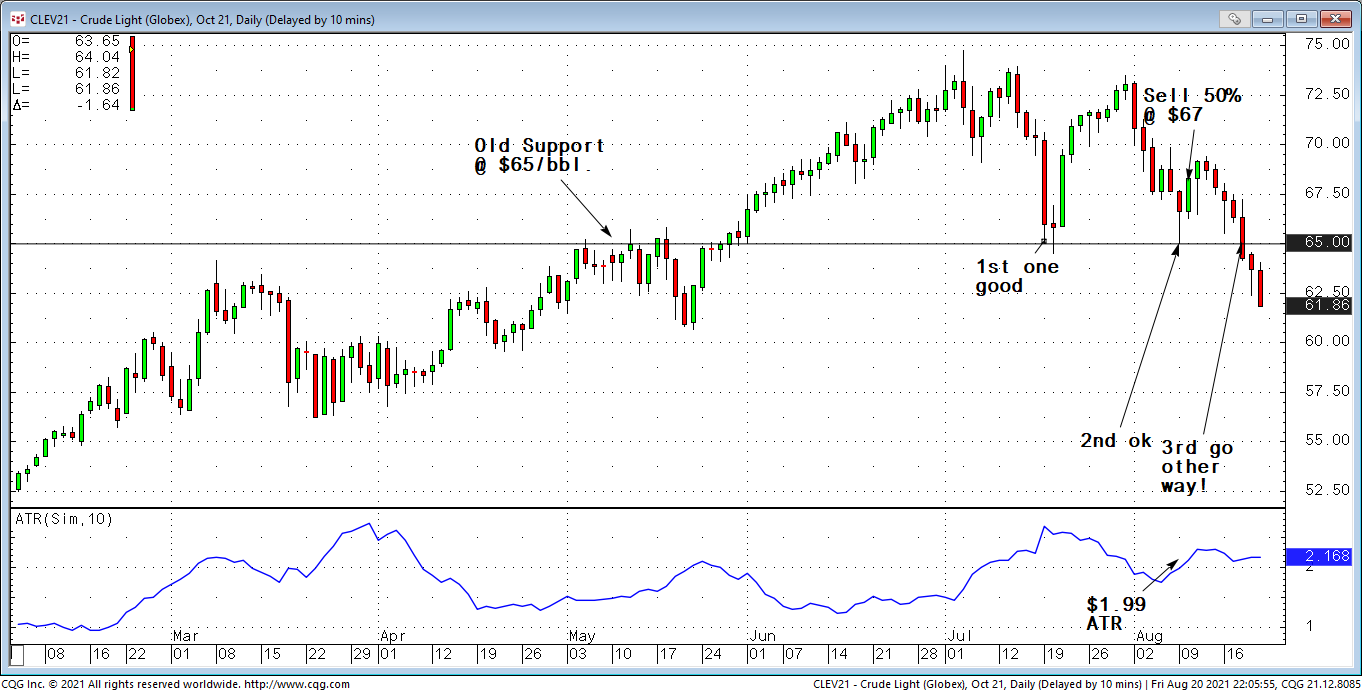I love creating sayings that drive home truths in technical analysis. One of my favorites has always been:
“First test good,
second okay,
third go the other way.”
So, what does it means? It means that the first test of a support or resistance level usually is a good price level for buying support or selling resistance. Why? Because most traders are afraid that recent market momentum will result in a break of that support or resistance level. That’s why this first test is usually a good trade for intermediate to long-term trend-following pullback traders.
If the market retests a second time, I’ll participate in that retest but I become extremely aggressive in protecting unrealized gains and will usually exit half the position if I can capture a significant profit (as calculated by a 10-day average true range). Why? Because this time more traders have confidence in the support or resistance level since we recently tested and bounced off of that price level. Therefore, it is “tradeable”, but not as powerful as the first test when all the momentum players were betting on a break of the level.
If there is a third test of the price level, I tend to, “go the other way” and sell the support or buy the resistance. Why? Because now virtually all traders are aware of the price level and have confidence that the level will hold. Consequently, this third test of support/resistance is often susceptible to a break (See Figure 1).
Figure 1 – October 2021 Daily Nymex Crude Oil Chart
